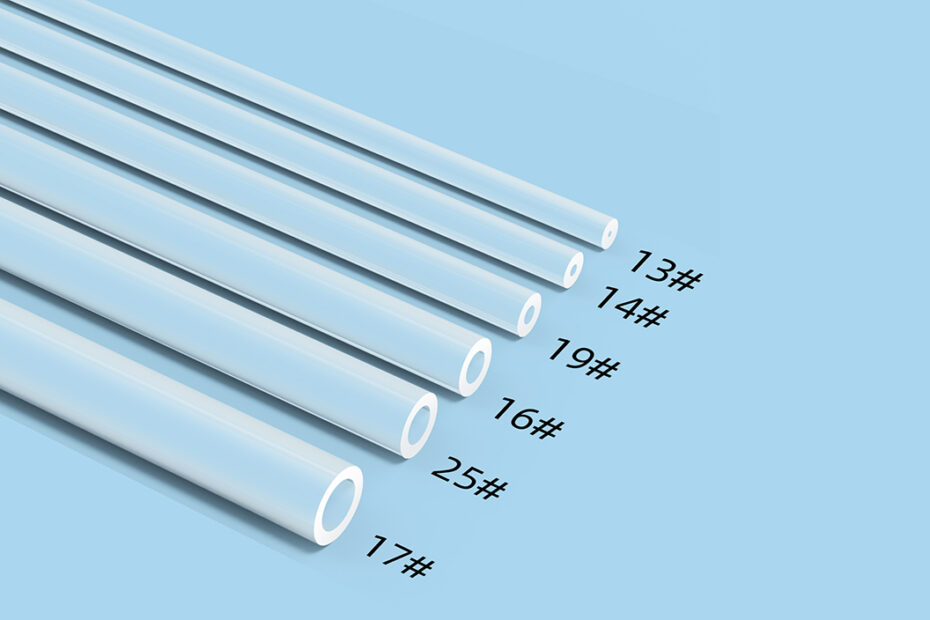Introduction
As a precision fluid transfer device, peristaltic pumps are widely used in chemical, pharmaceutical, food processing, and environmental protection industries. The tubing, being one of the core components of peristaltic pumps, has its acid and alkali resistance directly determining the pump’s service life and the safety of fluid transfer. This article will thoroughly examine the performance characteristics of peristaltic pump tubing in different acid and alkali environments, providing reference for engineers to select appropriate tubing materials.
-
Overview of Peristaltic Pump Tubing Materials
Peristaltic pump tubing is mainly categorized into the following types based on material:
Silicone Tubing: Offers excellent flexibility and biocompatibility with a wide temperature range
FKM (Fluorocarbon Rubber) Tubing: Superior chemical corrosion resistance, especially suitable for strong acid and alkali environments
Polyurethane Tubing: High wear resistance with moderate chemical resistance
PVC Tubing: Low cost, suitable for weak acid and alkali environments
EPDM (Ethylene Propylene Diene Monomer) Rubber Tubing: Outstanding oxidation and weather resistance
Each material demonstrates significantly different resistance to acids and alkalis due to variations in molecular structure. Understanding these differences is crucial for proper selection.
-
Tubing Performance in Different pH Environments
Strong Acidic Environments (pH<3)
Tubing materials face severe challenges in strong acidic environments:
FKM Tubing: Performs best, resistant to concentrated sulfuric acid (98%), hydrochloric acid (37%), etc., with long-term service temperature up to 200°C
Silicone Tubing: Good resistance to medium-low concentration inorganic acids (e.g., 10% sulfuric acid) but corroded by hydrofluoric acid
Polyurethane Tubing: Only suitable for weak acidic environments as strong acids cause material hydrolysis degradation
PVC Tubing: Rapidly damaged by strong oxidizing acids like concentrated sulfuric and nitric acids
Case Study: A chemical plant transporting 30% hydrochloric acid solution found that standard silicone tubing lasted only 2 weeks, while switching to FKM tubing extended service life to over 6 months.
Weak Acidic Environments (pH 3-6)
Most tubing materials perform well in this range:
Silicone Tubing: The most common choice, excellent resistance to organic acids (e.g., acetic acid, citric acid)
Polyurethane Tubing: Suitable for acidic food and beverage transfer, compliant with FDA standards
EPDM Rubber: Unique resistance to oxidizing acids (e.g., hypochlorous acid)
Neutral Environments (pH 6-8)
Nearly all tubing materials are suitable for neutral environments:
PVC Tubing: The most cost-effective option
Silicone Tubing: Ideal for high-purity applications like pharmaceutical industry
Polyurethane Tubing: Excellent choice for high-pressure transfer
Weak Alkaline Environments (pH 8-11)
Silicone Tubing: Performs well but shows slight swelling with prolonged exposure
Polyurethane Tubing: Resistant to most weak alkalis but degrades faster with amine compounds
EPDM Rubber: Good resistance to alkaline cleaners
Strong Alkaline Environments (pH>11)
Strong alkalis are extremely destructive to tubing materials:
FKM Tubing: The only material that can long-term withstand concentrated sodium hydroxide (50%)
Silicone Tubing: Gradually corroded by strong alkalis, leading to surface powdering
PVC Tubing: Rapidly becomes brittle and cracks in hot, strong alkaline solutions
Application Example: In sodium hydroxide solution transfer systems, FKM tubing lasts over 10 times longer than standard rubber tubing.
-
Other Factors Affecting Tubing Acid/Alkali Resistance
Temperature Impact: Chemical corrosion rate approximately doubles with every 10°C temperature increase
Pressure Factors: High pressure accelerates chemical penetration through tube walls
Mechanical Stress: Peristaltic pump compression action intensifies chemical corrosion
Exposure Duration: Long-term immersion causes different corrosion levels than intermittent contact
Concentration Gradient: Generally, higher concentrations increase corrosiveness
-
Tubing Selection Recommendations
Comprehensive Fluid Analysis: Including pH value, chemical composition, concentration, temperature, etc.
Operational Parameters: Flow rate, pressure, pump speed, and other operating conditions
Certification Requirements: Industry standards like FDA, USP Class VI
Cost-Benefit Analysis: Balancing initial cost with service life
Field Testing: Conducting long-term tests in small-scale systems
-
Maintenance and Replacement Guidelines
Regular Inspection: Check for discoloration, swelling, cracks, or surface roughness
Preventive Replacement: Establish replacement schedules based on operating hours
Proper Storage: Avoid direct sunlight and extreme temperatures
System Cleaning: Flush with neutral solutions during shutdowns
Conclusion
Selecting peristaltic pump tubing with appropriate acid/alkali resistance is an engineering technology requiring comprehensive consideration of multiple factors. Proper selection not only extends tubing service life and reduces maintenance costs but also ensures process stability and product quality consistency. With advancements in materials science, future high-performance tubing capable of withstanding extreme chemical environments will provide more reliable fluid transfer solutions across industrial sectors.
